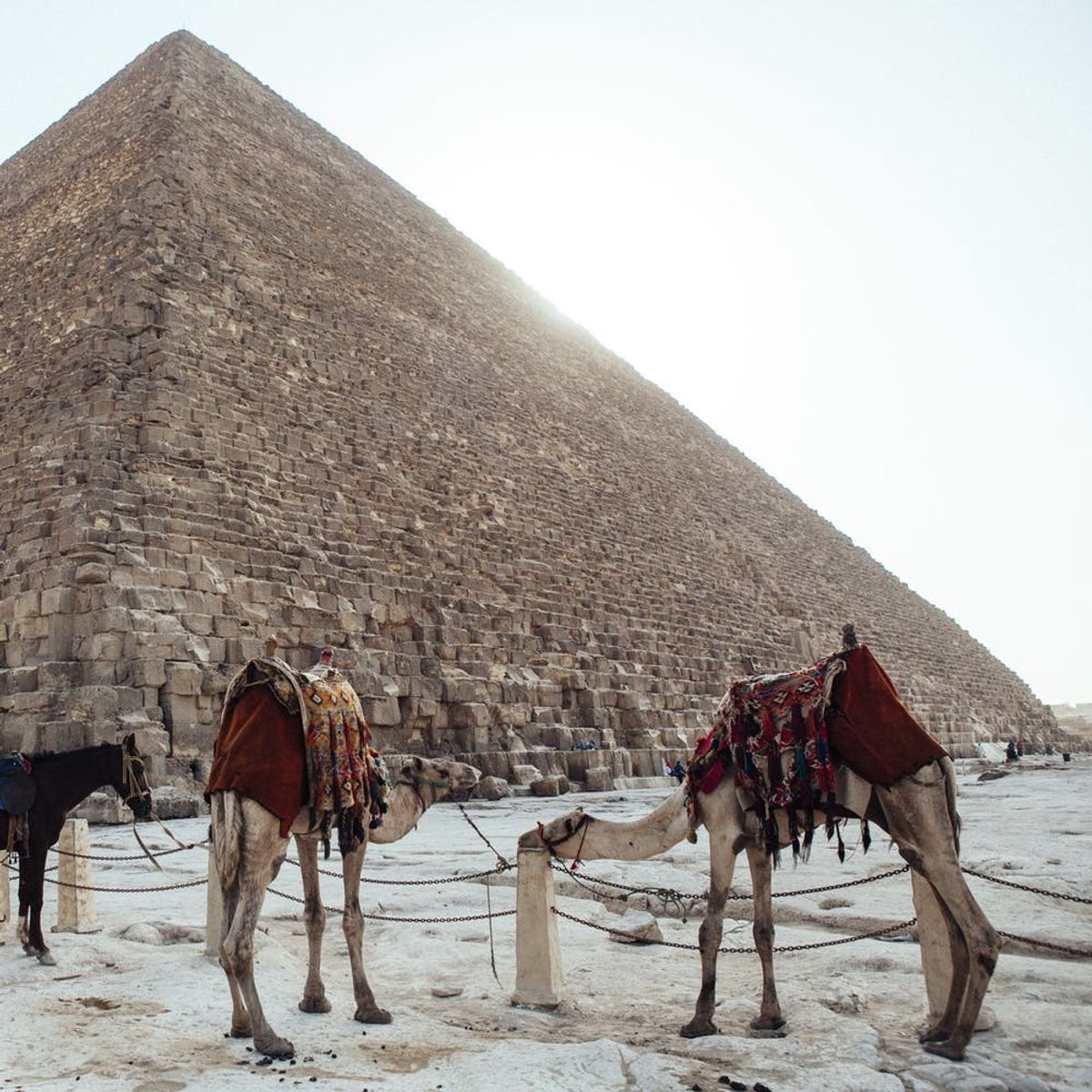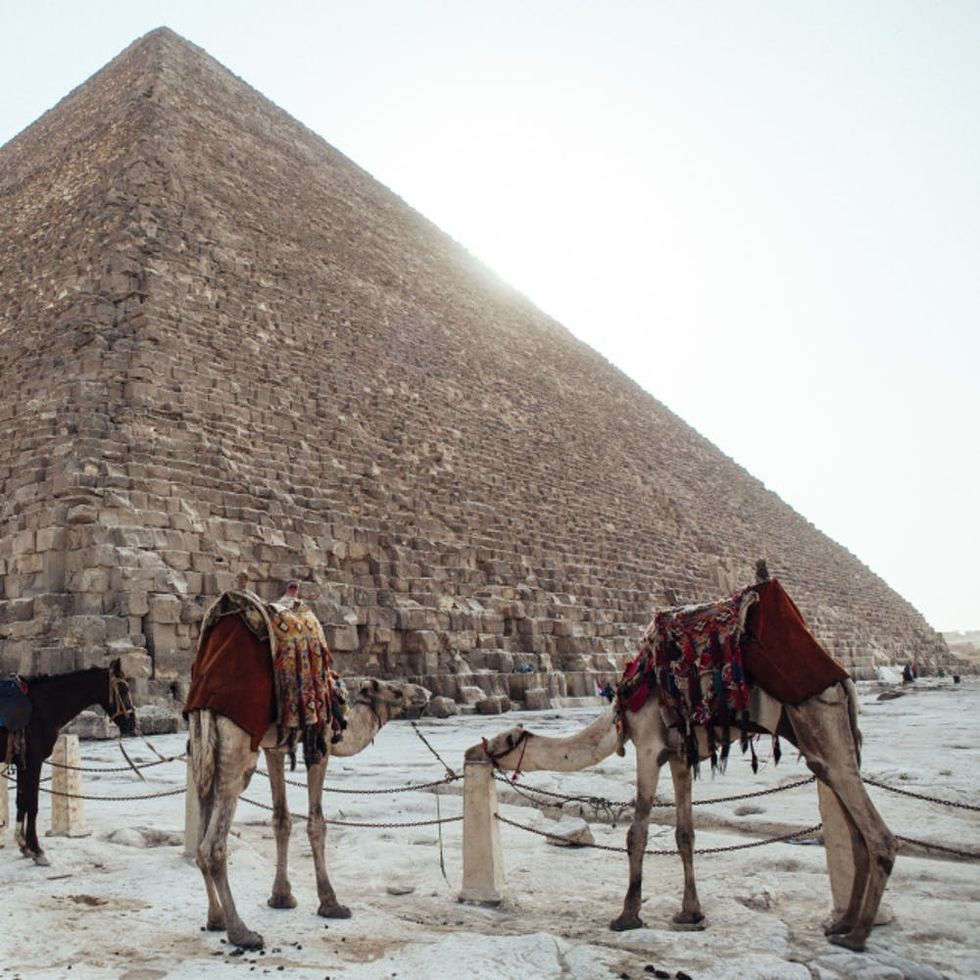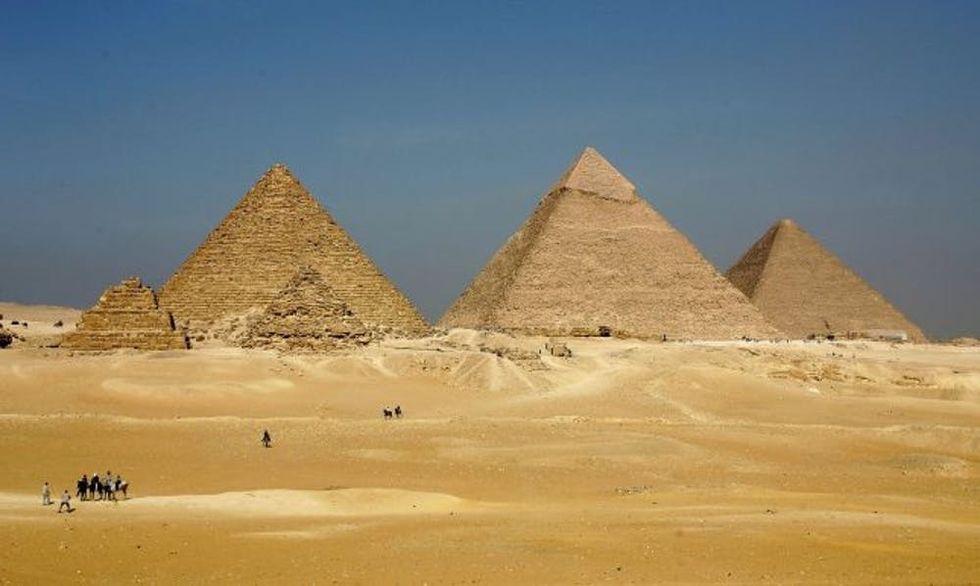Scientists Believe They Have Discovered a *NEW* Secret Chamber in the Great Pyramid of Giza

Five thousand years after it was built, the Great Pyramid of Giza is still full of surprises, and thanks to some modern technology, Egyptologists believe they have uncovered a surprising new discovery about one of the original Seven Wonders: a hidden chamber deep inside the pyramid that NO ONE in modern times knew even existed.
Khufu’s pyramid (AKA The Great Pyramid) was long thought to have been fully excavated and cataloged, but when Mehdi Tayoubi from the HIP Institute in France and Kunihiro Morishima from Nagoya University in Japan combined their knowledge of archaeology and particle physics, the scientists were able to pinpoint what they are calling a “void” in the middle of the pyramid’s structure.

How did Tayoubi and Morishima figure out there was an open space inside the pyramid? Using perfectly calculated measurements of an elementary space particle called a muon, the scientists were able to get a read on the densities within the pyramid, meaning they could properly measure the density of the rock making up the structure. And that’s how they spotted the void, measuring in at a whopping 100 feet in length.
The Great Pyramid of Giza is presumed to have been built by the Pharaoh Kufu (also known as Cheops), being completed around 2560 BCE. Before discovering the void, there were three known rooms to the pyramid; the King’s Chamber, the Queen’s Chamber, and an unfinished room cut into the bedrock upon which the pyramid was built. There are also a series of long hallways and corridors.
While the discovery is exciting for Egyptologists and archaeologists alike, getting to the void will be difficult. One of the goals of the work is that these scientists do no damage to the structures they are researching, and in Egypt, there is a governing body with very strict rules about how and what can be touched during scientific work. And for the time being, they aren’t even sure if the void is a room, a corridor, or a storehouse.

Associate Professor of Ancient Egyptian Art & Architecture at the University of California Los Angeles Katherine Cooney did not participate in this study, but believes that the void could have been a floating chamber originally designed to prevent unwanted access.
“To construct these internal structures they had to build from the bottom up,” she told Gizmodo. “They had to create the chambers and passages as they built upwards.” Cooney explained that these floating chambers were popular with both Khufu and his father, Sneferu, but fell out of favor.
While scientists would need to get permission to drill into the pyramid in order to figure out what is inside the void, they may not have to. In recent years, new tunnels and corridors have been found throughout the Great Pyramid, meaning they may simply not have found the entrance to the void yet.
For the time being, however, Professor Cooney thinks that we should take a step back from trying to resolve this mystery too quickly, saying, “We need to stop rushing archaeological discoveries that don’t need to be rushed and push scientists to make declarations about discoveries that aren’t yet proven. It’s important to remember the old adage, ‘archaeology is destructive,’ and realize that the next generation will be able to do it better.”
Do you love to nerd out on historical news like this? Tell us @BritandCo!
(Photos via Sean Gallup, Ed Giles /Getty)


















